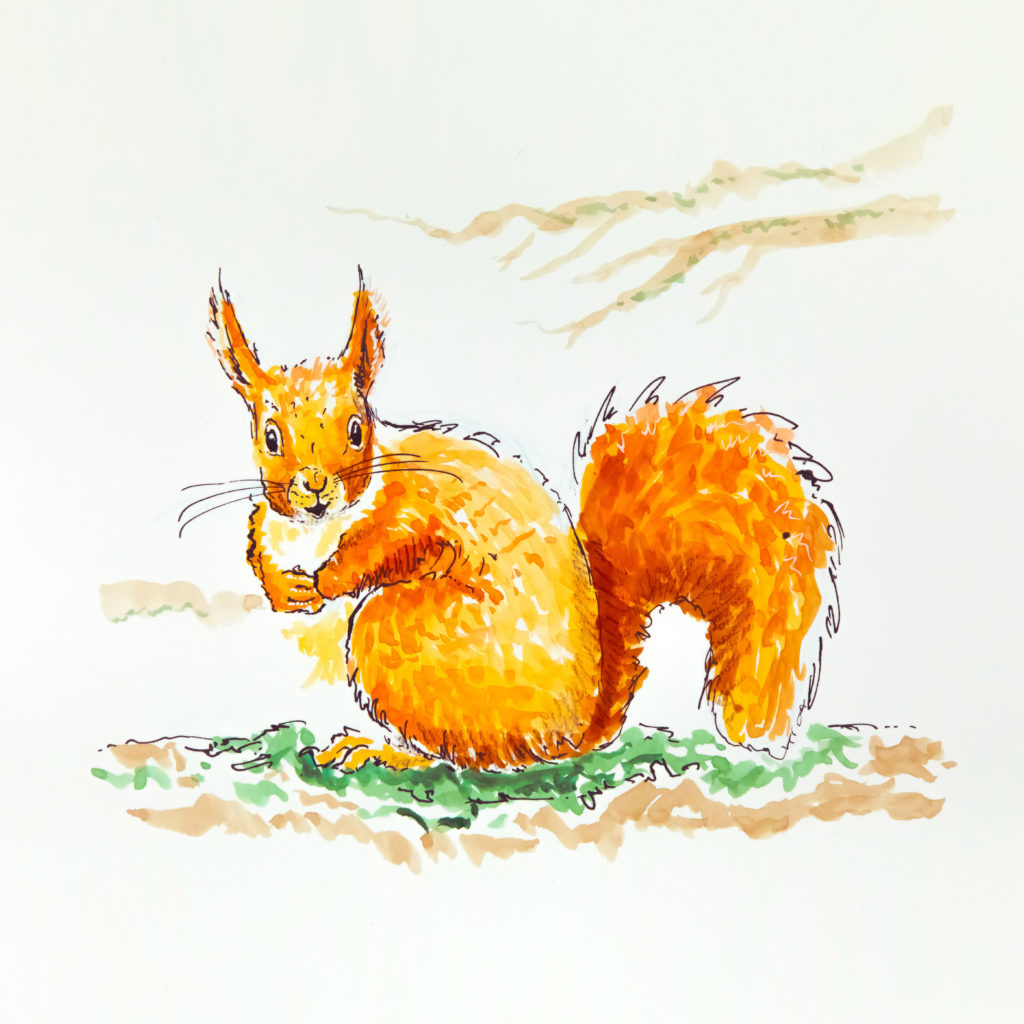Red Squirrel
Various | Curious Nature
The red squirrel is the only native squirrel species in the UK. The introduction of the grey squirrel from North America has had a dramatic impact on red squirrel numbers. Today it is only found in limited regions. Analysing its genome in comparison with the grey squirrel may help with developing protections, for example against squirrel pox virus.

The Tale of Squirrel Nutkin
Beatrix Potter
Beatrix Potter’s books have brought many animals to life, each with different personalities that we can recognise. Squirrel Nutkin is a naughty, rude young red squirrel who finds himself in trouble with Old Brown Owl in the woods where he goes to find nuts.
Potter’s illustrations of Nutkin and his brothers have shaped our image of the species ever since.
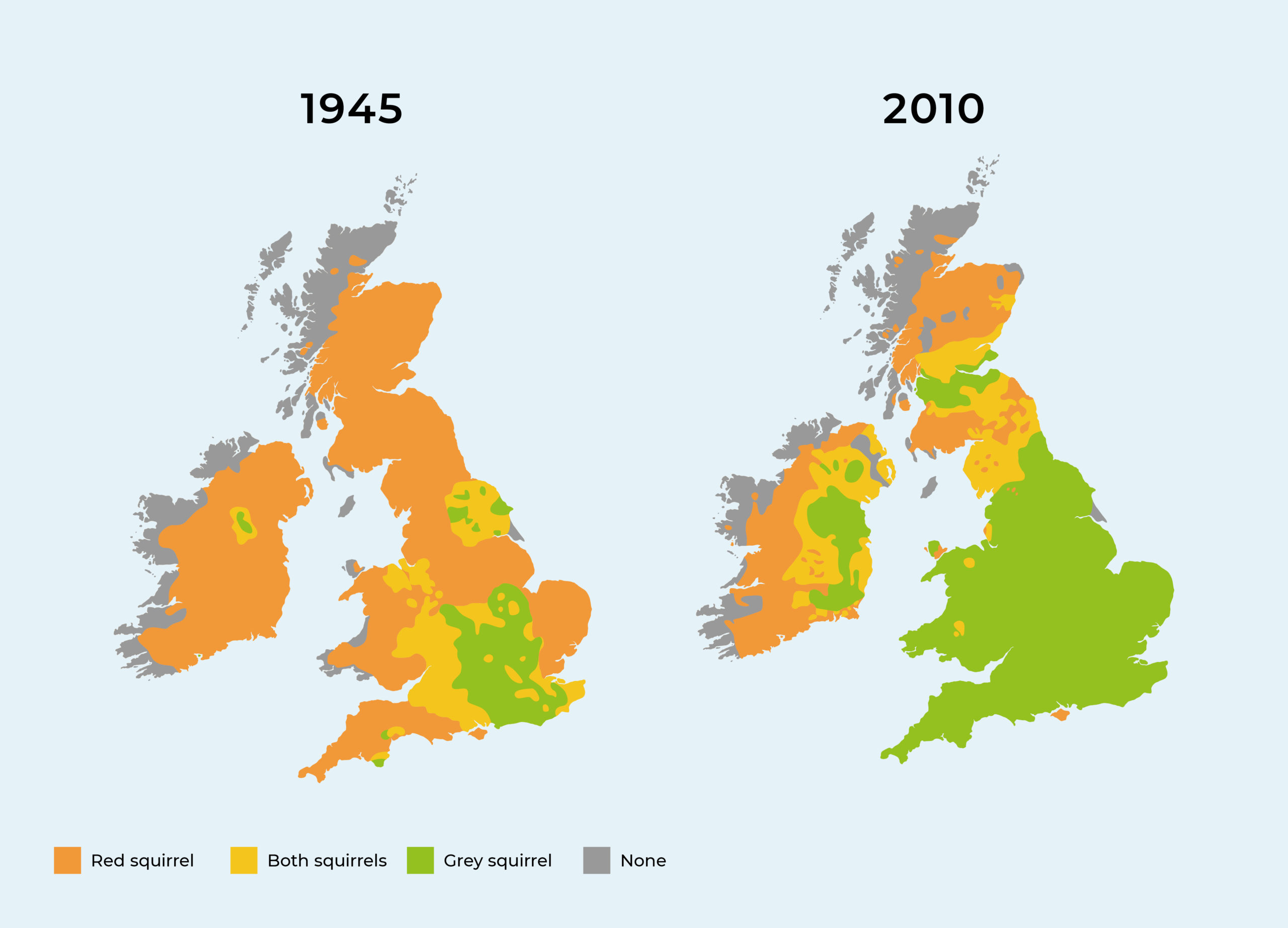
Map showing the distribution of squirrels in the UK and Ireland
Red squirrels are the only native squirrel species in the UK and Ireland. With the introduction and growth in population of the grey squirrel, the red has faced serious decline. The greys out-compete the reds through their diet, their bigger litters when breeding, and through spread of disease. They are now only found in certain places in the UK, and efforts are made to protect these populations. They were recently placed on the UK’s “red list” for seriously endangered mammals.
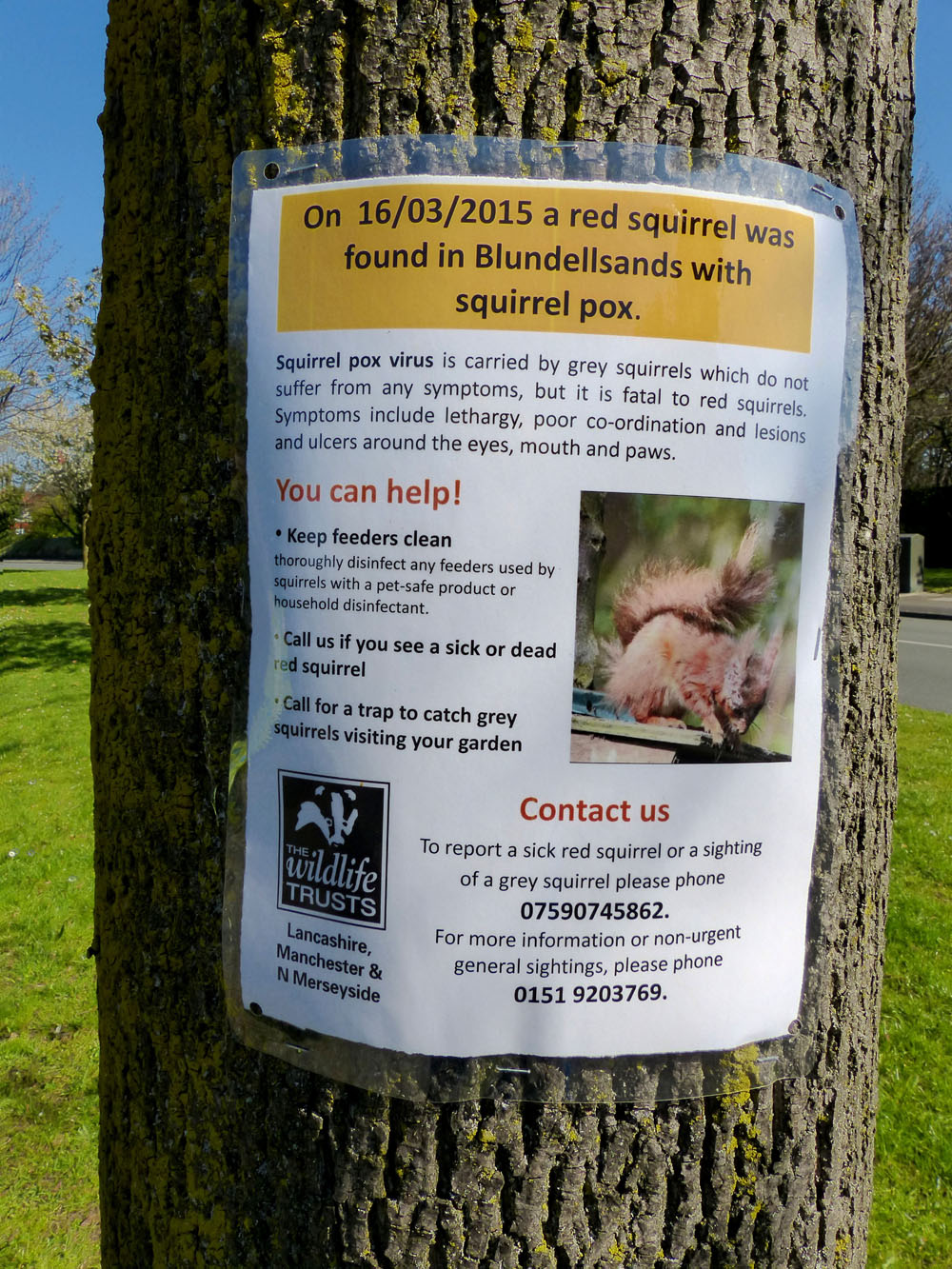
Squirrel pox virus
It was thought that the decline of red squirrels was due to the larger greys physically attacking them. However, we now know that aggression between the species is uncommon. Grey squirrels can be carriers of squirrel pox virus, which usually has no symptoms for them but is very harmful to reds, who seem to largely have no immunity to it.
In areas with red populations the threat of exposure to squirrel pox virus is taken very seriously, which is why greys are carefully monitored.
Sequencing the genomes of both the red and grey squirrels may help us understand this difference by comparing the two sequences from this there is the possibility of developing treatments to protect the red squirrels.
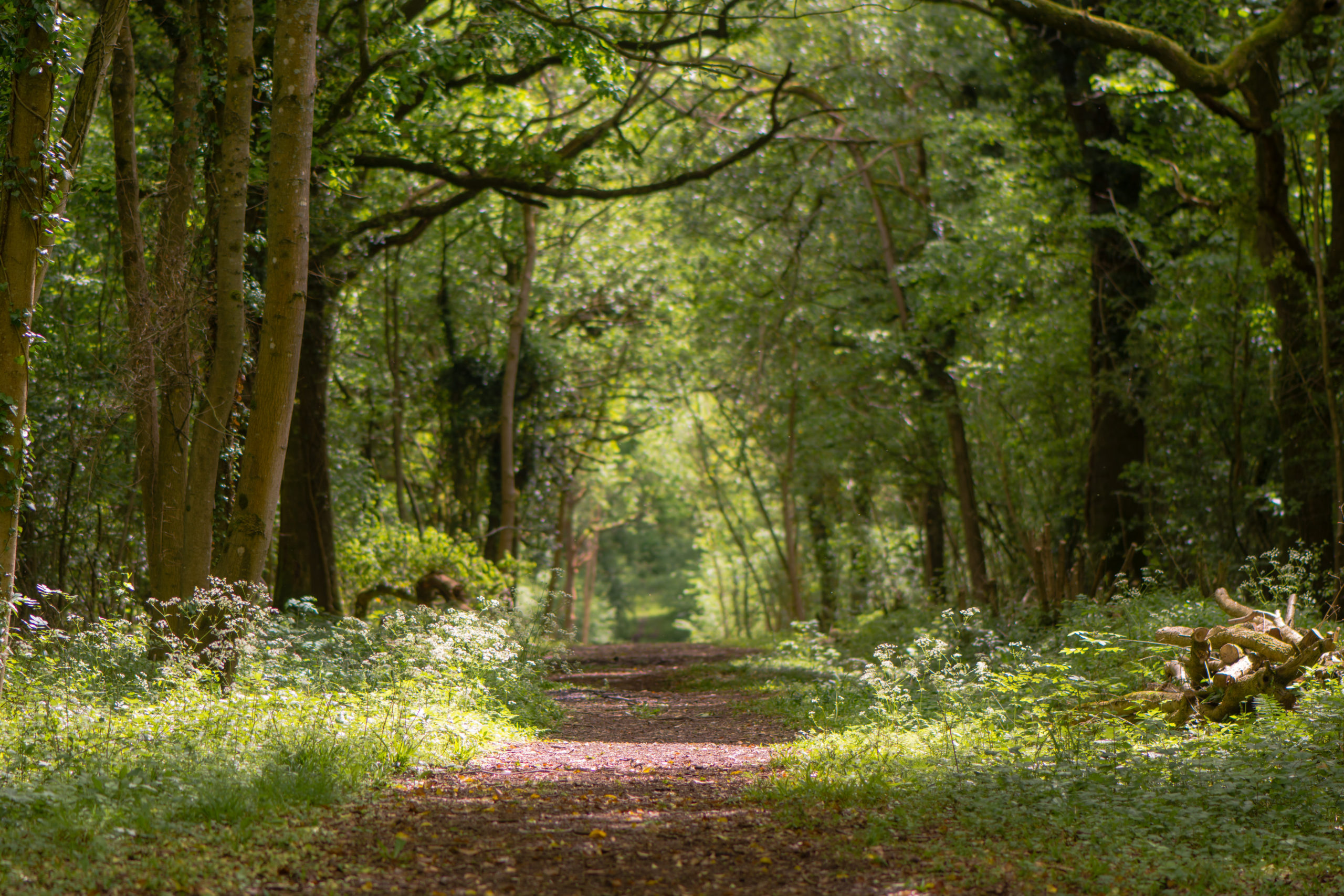
Woodland
Both red and grey squirrels inhabit wooded areas, though reds spend much more of their day up in treetops than the greys, which are quite happy on the ground. A lot of the work in monitoring squirrel populations is about understanding how many inhabit a particular area. Where there is a good, reliable food supply, more squirrels can be supported per hectare. If food is scarcer, the squirrel will need to extend its home range to find enough food – this is when we might see them venturing into our gardens.
Another danger for red squirrels are roads. We plant trees along them but the wide distances between the branches means that they need to come to ground level to reach the next tree, and can be hit by vehicles.
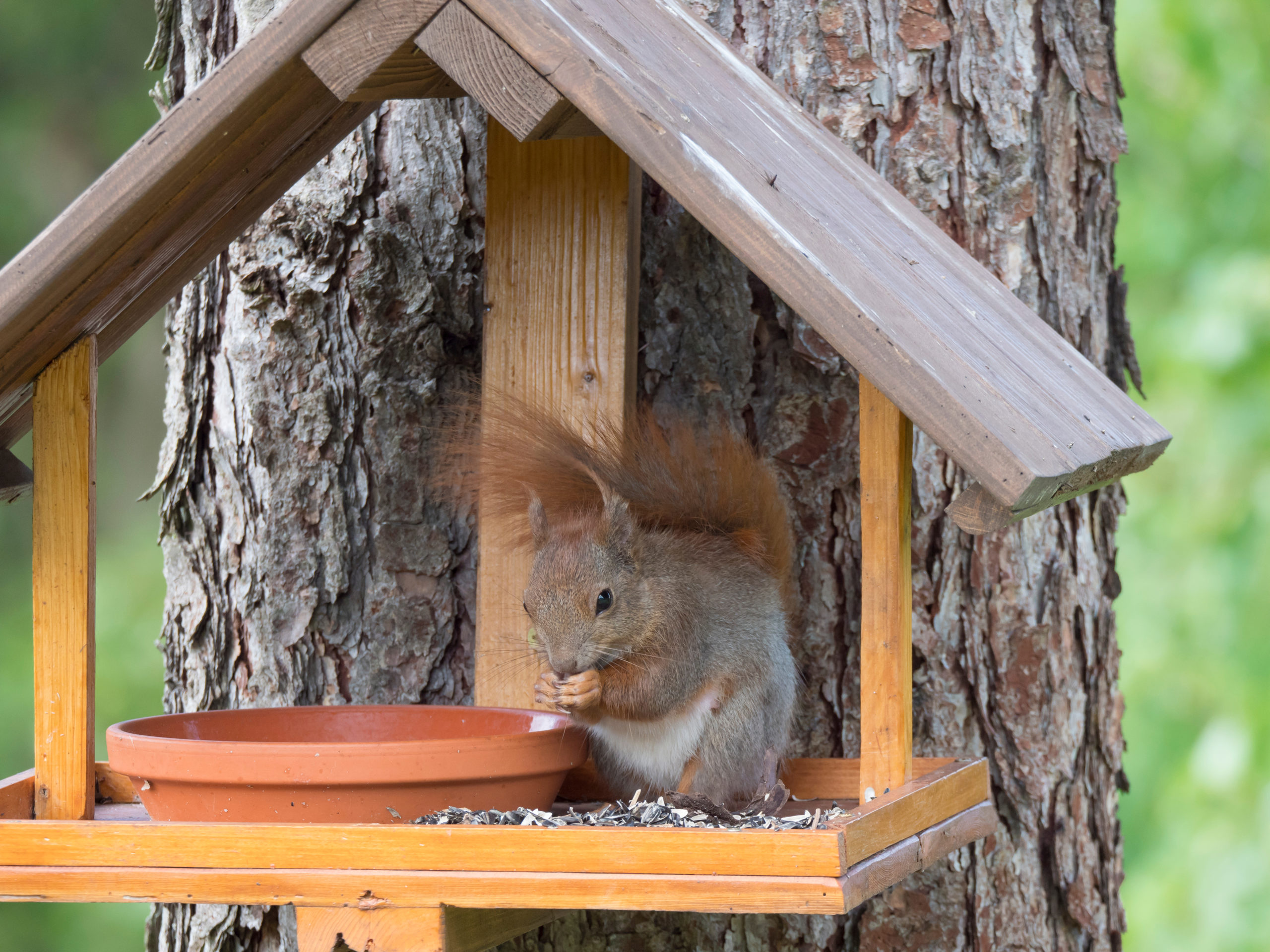
Bird table with squirrel foods
Another way that grey squirrels are out-competing reds is through food. Greys tend to be larger, meaning they eat more food, leaving less for reds. Greys are able to eat un-ripened seeds and nuts, whereas the reds cannot digest them. This gives greys a head start on food sources, out-stripping them before the reds can eat them.
In areas protecting red squirrels, people are encouraged to leave squirrel-friendly food on their bird feeders to help provide more food for the reds. Though limit the number of peanuts, as these are a bit like squirrel junk food! They love to eat them but they have limited nutritional value. It is also important to regularly clean the feeder, because if it is visited by multiple squirrels, or a mix of red and grey, this can lead to the spread of infections.
